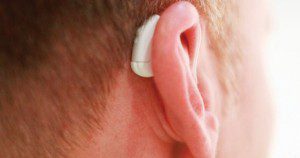Using Body Language as a Communication Tool
By Dr. Noël Crosby, Au.D. –


The truth is that wearing hearing aids, just like wearing contact lenses or eye glasses, can take some getting used to. But you can improve your ability to adapt to them quickly and gain maximum benefit by making a serious commitment to wearing them every day during the hours you are awake. Step #4 in our list of Communication Strategies for the Listener with Hearing Loss addresses the importance of commitment.
Communication Strategies for the LISTENER with Hearing Loss
Step #4: Make an unwavering commitment to wearing hearing aids or using assistive listening devices.
Webster’s dictionary defines “commitment” as “an agreement or pledge to do something.” Simply put, when it comes to wearing hearing aids, it means you must be willing to do whatever it takes to be a successful hearing aid user, in spite of any setbacks that may occur during an adjustment period that can take up to 90 days.
To help keep yourself on track and to ensure you keep the promise you made to yourself, remember the following:
1. Your commitment to improving your ability to hear will not only improve the quality of your life, but also the life quality of those around you. Remember, struggling to hear is frustrating…for you, as well as your friends and family.
2. Ask for help. Share your commitment to wearing hearing aids with others. Let them help you keep your promise by reminding you to wear your hearing aids, if necessary, and to remind you to see your audiologist with any questions or concerns you have about your new hearing aids.
3. Develop a detailed action plan to help you form a new habit. Consider putting your commitment in writing and posting it on the refrigerator. Create a “to do” list reminding you to clean them and keep track of the hours you wear them. But no matter what, never give up and put your hearing aids in a drawer.
4. Reward yourself with a small gift or activity for achieving small goals.
Communication Strategies for the SPEAKER:
Step #4: Learn to understand and use body language
Body language is a form of human non-verbal communication consisting of eye movements, facial expressions, hand gestures and posture. Hearing aid users frequently rely upon body language more so than those with normal hearing, so pay attention to the message you are sending with your eyes, hands and posture.
1. Before speaking, make eye contact with the person wearing hearing aids. You can initiate this by calling the person’s name, through a simple tap on the shoulder or a wave to attract attention.
2. Do not turn away while speaking.
3. Maintain eye contact to aid in communication. Your facial expressions help convey the emotion behind the words you are speaking.
4. Use pantomime if necessary.
5. If making a presentation before a group, be cognizant of the fact that talking while your back is turned to write on a chalkboard or while your face is hidden behind a computer screen makes it difficult to speech read.
Next month: Step #5-Develop Listening and Speech Reading Skills/Remove Physical Barriers to Speech
Communication Strategies for the Listener with Hearing Loss Step
#1: Recognize and understand the signs and symptoms of hearing loss.
Step #2: Understand treatment options.
Step #3: Have realistic expectations while implementing strategies for successful adaptation Step
#4: Make an unwavering commitment to wearing hearing aids or using assistive listening devices.
Step #5: Develop listening and speech reading skills.
Step #6: Be assertive. Take responsibility for speech comprehension by taking steps for controlling the listening environment and giving honest and direct feedback to the speaker.
Communication Strategies the Speaker Step
#1: Stop enabling the hearing impaired listener.
Step #2: Support and encourage all efforts to get treatment. Step
#3: Develop strategies for clear speech. (voice intensity, projection, rate and clarity)
Step #4: Learn to understand and use body language.
Step #5: Remove physical barriers to speech.
Step #6: Learn to make the message interesting.
PROFESSIONAL BIO
Dr. Noël Crosby, Au.D., owner and practicing audiologist at Advanced Hearing Solutions in Englewood, FL is an experienced professional whose career has been devoted to helping people of all ages hear and understand more clearly.
With over 23 years of experience, Dr. Crosby’s career path is marked by the pursuit of advanced education. After completing her undergraduate requirements, she received her Bachelor and Master of Science degrees from Florida State University and her Doctorate in Audiology from the University of Florida.
Her credibility as an authority grew during her tenure as the Director of Audiology at the Silverstein Institute in Sarasota, FL from 1991-1998. Today, in addition to managing a successful audiology practice, Dr. Crosby just completed her second term as president of The Florida Academy of Audiology.
941-474-8393 | www.drnoelcrosby.com
 Southwest Florida's Health and Wellness Magazine Health and Wellness Articles
Southwest Florida's Health and Wellness Magazine Health and Wellness Articles

